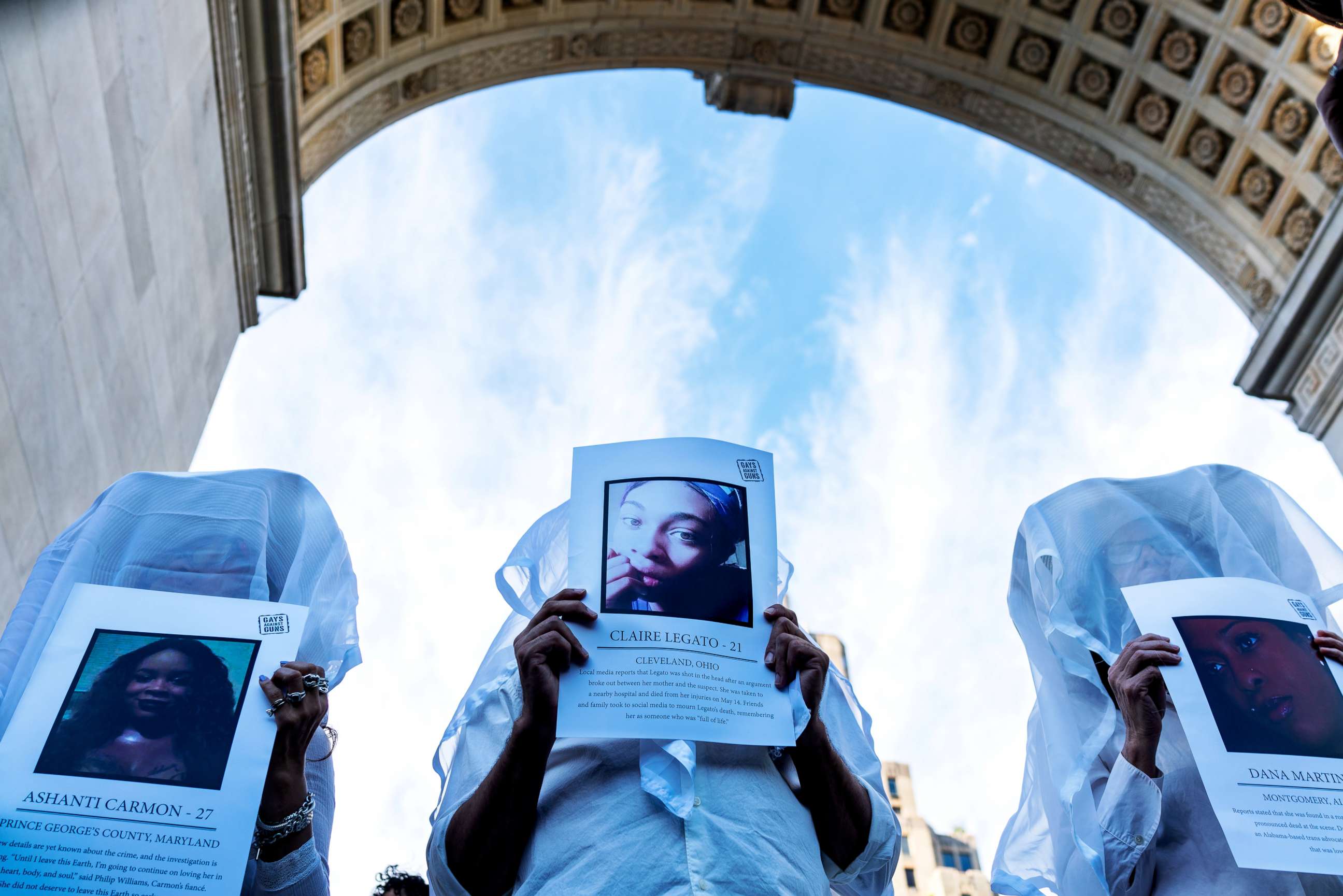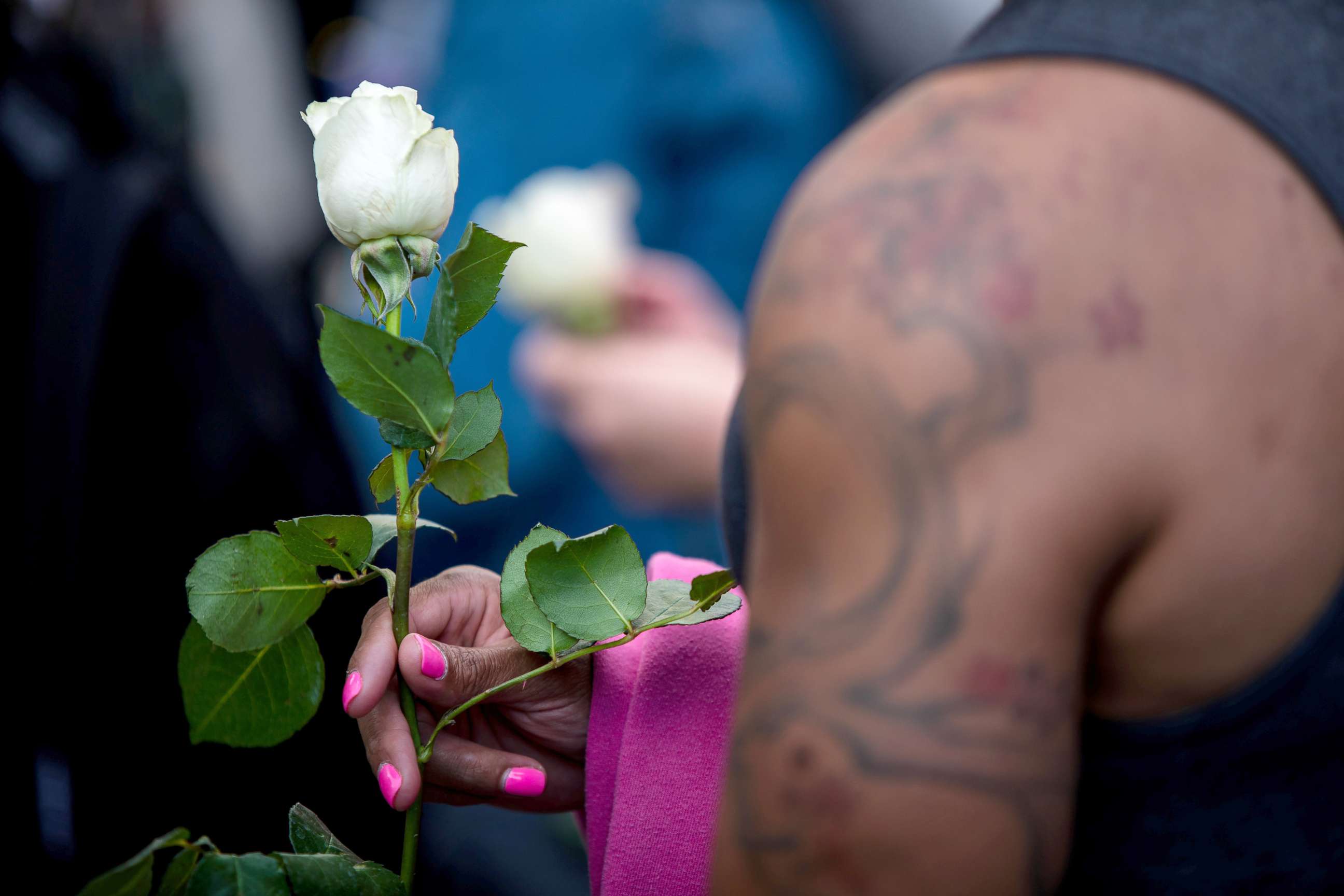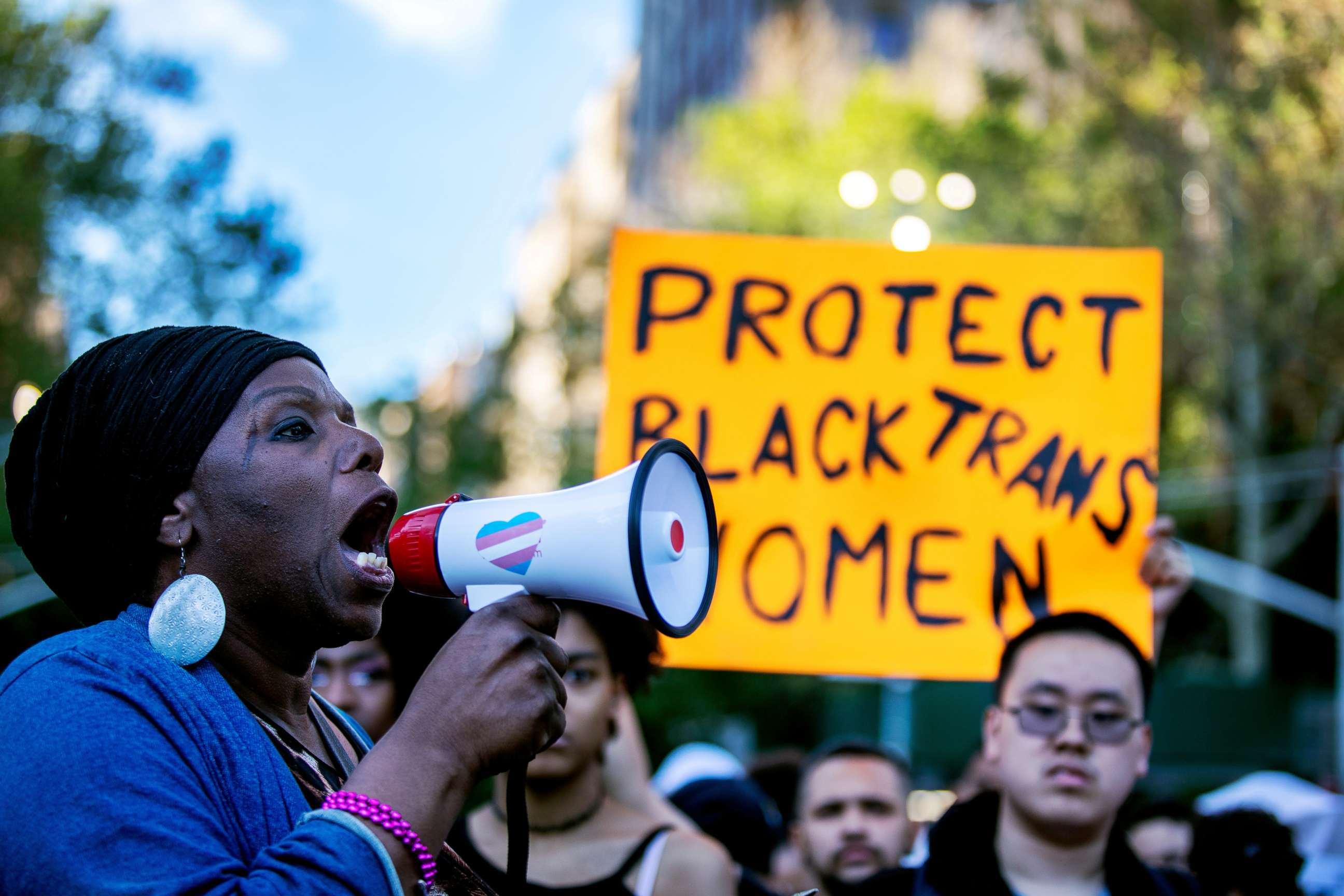Allies need to focus specifically on transgender issues in wake of violence: Activists
Activists say a key is education about what it means to be transgender.
As LGBTQ allies join in on Pride celebrations around the country, advocates say it's a good time to think about how supporters can offer better support to a group that has proven to be the most vulnerable: transgender people.
Researchers and civil rights advocates said there are many issues surrounding cultural representation of transgender individuals, but the biggest concerns stem from how they are often treated.
"A lot of people understand lesbians and gays and even bisexuals, but the ‘T’ is where we’ve had some division," Rebecca Williams, an LGBTQ rights advocate and the first openly gay freeholder of Union County, New Jersey, told ABC News. "People still say toxic things like, 'Well, they're not real women, they're not real men, or they're not really a part of our community.'"
While hate-crime statistics from the FBI show violent incidents against gays and lesbians dropping slightly, or remaining stagnant, from 2013 to 2017 (the most recent year data has been released), violent incidents against transgender individuals are nearly five times higher over that period.
Hate crimes against gays and lesbians dropped from 910 in 2013 to 728 in 2014, and then stagnated -- 800 in 2015, 799 in 2016 and 805 in 2017 -- over the next three years. Incidents against trans individuals rose each year: 23 in 2013, 58 in 2014, 73 in 2015, 105 in 2016 and 106 in 2017. The statistics are self-reported by local law enforcement agencies, and are therefore incomplete, and tracking of crimes against transgender people has likely improved in recent years.
But the statistics are stark nonetheless.

The key to stemming the tide may be spreading awareness about anti-transgender practices -- both intentional and unintentional -- within their own communities.
"Through education and awareness, we can become more conscious of the practices that highlight our differences. We should be accepting of everybody and see that all this violence and harassment affects all of us," Williams said. "Do some research by going to websites that advocate for transgender rights and share the information on social media. Talk to people and ask questions about what it means to be transgender."
Juan Battle, an author and professor of sociology at the Graduate Center of the City University of New York (CUNY), said LGBTQ circles and members of the media have gotten better when it comes to spreading the word about acts of oppression, discrimination and "othering," but the tough work is what comes after.
"We often describe how it shows up and what happens to those who are victims of it, but we don’t describe why society allows it to happen in the first place," Battle told ABC News. "We must question who benefits when we allow it."
"And in some instances -- to the degree that it can benefit the status quo or those who are the benefactors of it -- we don't only allow it, we actually encourage it," he added.
No community is insulated from violence, Battle noted, but he said it’s safe to say that violence is more prevalent in communities where members are subjected to oppression. For example, the LGBTQ community has a long and troubled history of discrimination, but experts said gays and lesbians are much more protected than their transgender counterparts, making them more susceptible to violence.

"Oppression leads to pressure and you've got to have ways of releasing pressure, whether it's a community or a pot of chili, there’s gotta be a way to let that steam off," Battle said. "And sometimes, one of the ways the steam gets released is through violence."
The steam appears to be building.
The Human Rights Campaign has tracked at least 136 deaths of transgender people since 2013 due to violence, with most victims being black transgender women, but the organization said the violence is hard to track due to misgendering and transphobia. The actual number of killings could be much higher.
Battle's comments come as supporters of the LGBTQ community flock to Pride Month parades and festivals around the country to commemorate the 50th anniversary of the Stonewall riots in New York -- an event that helped spawn the modern LGBTQ civil rights movement and one led by transgender activists Marsha P. Johnson and Sylvia Rivera.
It’s a time when color lines are blurred and the community bands together under one banner, but the categories that make up the LGBTQ community are often fragmented. The apparent hierarchy has evolved over time, but researchers said black transgender women almost always end up at the bottom.

"Overall, if you compare women of color to white women, women of color are more likely to experience violence. Similarly, poor women are more likely to experience physical violence than their non-poor counterparts," Battle said. "So if we we’re talking about trans women of color who are also economically challenged, they're just inherently more likely to suffer these negative outcomes than are other groups."
"The way to reduce that violence is just normalizing the population and stop 'othering' the population," he added.
Julisa Abad, director of transgender outreach and advocacy for the Fair Michigan Justice Project, said a lot of transphobic violence stems from the social stigma attached to being a trans woman.
She said allies who want to help get rid of the stigma can start by shutting down people who make insensitive jokes, or share social media posts that spread false narratives that paint transgender people as outsiders.
"If community members see that people in authority don't even respect trans women or treat them with dignity, it’s not going to want to make them treat you any better," Abad told ABC News. "If people don't ever see good representations of themselves or don't ever see light at the end of the tunnel, they’ll continue to make the same horrific decisions that keep them in those horrific places, because they don't believe that they can overcome."



